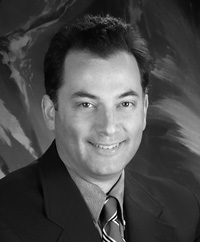Just before I moved to Columbia, Mo., in August 1986 to attend the University of Missouri, I read in Rolling Stone magazine that one of my favorite bands, The Dream Syndicate, was playing near campus.
Within days of arriving at Mizzou, my new roommate, Phil, let me borrow his Honda CRX, and I drove out to The Blue Note. I was early and walked in a side door, the one that bands would use to bring their equipment inside.
I spotted drummer Dennis Duck, with whom I’d exchanged a couple of letters. He couldn’t have been nicer, despite the fact that the band’s van had broken down en route somewhere in Oklahoma. Singer/guitarist Steve Wynn indulged me for a half-hour next to the bar, inviting me to stick around for a beer after the show.
Maxwell’s closing sparks memories
Stupid me, worried about making a 7:40 a.m. French class the next day, I didn’t hang around after the encore. But for a 19-year-old obsessed with alternative music, I was smitten. I would be a Blue Note regular for the next three years, eyewitness to some of the best bands of the era.
My fond memories of The Blue Note are never far away, but my mind raced with them last week as I heard an NPR story about the closing of Maxwell’s, Hoboken, N.J.’s legendary concert venue.
I’ve never been to Maxwell’s, but I suspect that the attachment that its regulars have to it is similar to my lasting affinity for The Blue Note.
Richard King and his business partner opened The Blue Note in 1980. King resembled Robert Redford and seemed to be the coolest guy in Columbia. So common was it for journalism students to profile him that King eventually was deemed off-limits.
The Blue Note was just south of Interstate 70, north of campus, and halfway between Kansas City and St. Louis. There was nothing flashy about the building (a former bakery), which is what made it a perfect antidote to the big hair and acid wash of the late 1980s. It was small, dark and far enough from campus that it was a pilgrimage.
You had to work to get there, just like so many of the bands that toured relentlessly in those days and so often made their ways to Columbia. Early each week, King, towing a messenger bag filled with concert posters, would staple them on kiosks on campus and downtown. Most shows cost no more than $5.
There was a great connection between the campus radio station, KCOU, and the best record store in town, Streetside Records, and The Blue Note. I love the Internet and digital music, but there’s something to be said for the effort it used to take to stay plugged into alternative music – and the hard work that bands, led by R.E.M., did to make names for themselves. Namely, they played gigs and got in vans and moved on to the next college town.
A road-weary Wynn signed an autograph for me that first night: “Somewhere in ’86! Where the hell am I? Jeez Louise.”
Sid can’t play first base
Many of the names won’t mean much to most people today. But they resonate with me still: Scruffy the Cat, Guadalcanal Diary, Let’s Active, Young Fresh Fellows, Dreams So Real, Johnny Reno, Love Tractor.
Even with a balcony and at capacity, crowds numbered in the hundreds. The turnout for a Marshall Crenshaw show might have been the biggest one. While most bands traveled by van, Marshall was a little more big-time: he had an RV.
Of course, there was the music. But I really cling to the moments when we got to talk to our rock heroes, who always seemed to have time for us. Looking back, they really weren’t that much older than we were.
There was Mike Connell of The Connells, coming off stage and wordlessly handing me a beer from behind the bar. (Thanks, Mike.)
Willie Aron of The Balancing Act complained to me about how poorly Sid Griffin, of another great Los Angeles band The Long Ryders, played first base in pickup softball games. We told Willie that he resembled the actor John Lithgow, so he signed his autograph: “All resemblances to the guy from Buckaroo Banzai are purely coincidental.”
Ben Vaughn, before he would record an entire album in his 1965 Rambler and really make a name for himself as composer for the TV show “3rd Rock from the Sun,” performed at The Blue Note prior to spring break. Few of us were there to see him walking across the round table tops while playing guitar.
In the early 1990s, The Blue Note moved to downtown Columbia, to a larger venue (a former theater) closer to the Mizzou campus. There was a 33rd birthday celebration on Friday (Aug. 2) – two days after Maxwell’s shut its doors for the final time.
As for the original Blue Note building at 912 Business Loop 70 East, it still draws crowds.
It’s a gentleman’s club.




